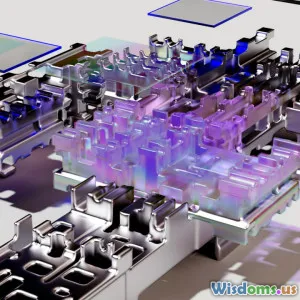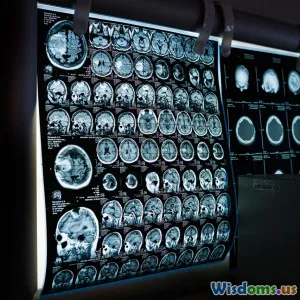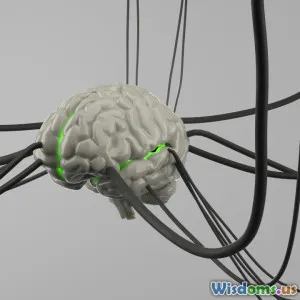
Prediction The Next Decade of BrainInspired Machine Learning Technologies
8 min read Explore the future of brain-inspired machine learning and its transformative impact over the next decade. (0 Reviews)
Prediction: The Next Decade of Brain-Inspired Machine Learning Technologies
Introduction
Imagine a future where our machines not only learn from vast datasets but do so in a remarkably efficient, adaptable, and brain-like manner. Brain-inspired machine learning is poised to reshape artificial intelligence by mimicking the fundamental workings of the human brain — from synaptic plasticity to energy-efficient neural computations. As we stand at the threshold of this new era, what can we expect in the upcoming decade? This article delves into the trajectory of brain-inspired machine learning technologies, highlighting groundbreaking trends, ongoing research, anticipated challenges, and transformative opportunities.
The Evolution and Promise of Brain-Inspired Machine Learning
Understanding Brain-Inspired ML
Traditional machine learning models like deep neural networks have been loosely based on neurological structures but remain primarily algorithmic and energy-intensive. Brain-inspired—or neuromorphic—machine learning tries to push this analogy further by replicating the brain's biological and electrical properties. This approach addresses not only processing but also learning paradigms such as asynchronous event-driven computation, synaptic plasticity, sparse coding, and hierarchical memory.
Why the Brain? The Human Brain is Incredibly Efficient
Our brain achieves extraordinary feats of parallel processing, learning, and adaptability while consuming just 20 watts of power—a feat unmatched by today's computing systems. Neuromorphic technologies look to emulate such efficiency, making AI more accessible for edge devices, reducing data center energy costs, and enabling truly autonomous systems like self-driving cars and personalized robotics.
Key Trends Shaping the Next Decade
1. Expansion of Neuromorphic Hardware
Over the next ten years, hardware development for brain-inspired AI will advance considerably. Early platforms like IBM's TrueNorth and Intel's Loihi chips laid the foundation with millions of “brain-like” spiking neurons operating asynchronously. Going forward, expect a leap in scale, energy efficiency, and integration:
- Example: Researchers at MIT have developed memristor-based synapses that promise ultra-dense, low-power neural cores that could be embedded in everyday devices.
- Anticipated growth: Gartner predicts the neuromorphic hardware market to grow at a CAGR of over 20% within this decade, fueled by demands from IoT, real-time analytics, and autonomous robotics.
2. Advancements in Spiking Neural Networks (SNNs)
Spiking Neural Networks, which mimic the timing-based communication of biological neurons, will evolve from research curiosities into production-worthy architectures. Their ability to encode data temporally and work with sparse signals is critical for energy-efficient computation.
- Research insight: DARPA's SENSORIA program emphasizes SNNs for military-grade situational awareness, a clear indicator of government investment in this tech.
- Integration with machine learning techniques like reinforcement learning will yield models capable of real-time adaptation — approaching biological brain flexibility.
3. Cross-Pollination With Neuroscience Discoveries
Collaborative research between AI and neuroscience is increasingly synergistic. Novel discoveries around brain plasticity, memory consolidation, and hierarchical learning will shape next-gen algorithms.
- Example: Studies on hippocampal replay and its role in memory are inspiring new recurrent neural network designs that improve long-term retention in AI models.
- Such bio-inspired innovations could overcome current limitations such as catastrophic forgetting, enabling continuous lifelong learning.
4. Increased Focus on Explainability and Ethical AI
The intrinsic interpretability of brain-inspired models, combined with their adaptive learning, will enable better understanding of AI decisions — a crucial aspect as AI integrates more deeply into healthcare, finance, and governance.
- Insights from cognitive science into human decision-making biases will inform fairness-aware algorithms.
- Efforts to model consciousness-related processes may one day lead to AI systems with self-monitoring capabilities.
Challenges to Overcome
Scaling Complexity Without Energy Explosion
Achieving brain-scale neural networks on silicon presents formidable challenges in power consumption and device variability. Researchers face engineering hurdles to maintain reliable performance at such scales.
- Device aging, noise sensitivity, and precision issues in memristors and spiking circuits remain active research areas.
Bridging the Gap Between Biology and Silicon
The human brain operates with biochemical processes inexplicable by current hardware. Translating these processes faithfully to electronic counterparts requires new materials science breakthroughs.
- Quantum computing and novel substrates (e.g., photonics, bioelectronics) hold promise but are still nascent.
Algorithmic Maturity and Standardization
As brain-inspired learning matures, a lack of standardized frameworks slows industrial adoption.
- Initiatives like the Open Neural Network Exchange (ONNX) need expansion to cover brain-inspired formats, facilitating wider ecosystem collaboration.
Real-World Impact: Case Studies and Predictions
Autonomous Robotics
Robots equipped with neuromorphic processors will better adapt to dynamic environments, learning new tasks on-the-fly.
- Boston Dynamics-style robots will benefit from local, low-latency processing to negotiate complex terrains without reliance on cloud computations.
Personalized Healthcare
Brain-inspired AI will accelerate diagnosis and treatment personalization by efficiently interpreting multimodal patient data such as EEG, MRI, and genetic records.
- Early detection of neurological disorders via real-time brain signal analysis will become more feasible.
Edge Computing and Internet of Things (IoT)
Neuromorphic chips embedded in smart devices will drastically reduce reliance on cloud infrastructure, enhancing privacy and responsiveness.
- Smart cameras handling complex visual tasks locally could enforce urban security with minimal bandwidth.
Conclusion: A Neuromorphic Renaissance Is Upon Us
The upcoming decade will witness brain-inspired machine learning transitioning from an academic frontier to mainstream technology impacting multiple industries. With revolutionary hardware poised to tackle energy constraints, innovative algorithms drawing directly from cutting-edge neuroscience, and growing application domains, the field promises AI systems that are more efficient, adaptive, and transparent.
As Dr. Kwabena Boahen, a pioneer in neuromorphic engineering, said, "To build truly intelligent machines, we must build machines that think like brains." This vision is closer than ever, bringing a new dawn where the brain and machine converge — delivering intelligence on par with, or perhaps surpassing, our own.
The challenge for researchers, engineers, and policymakers will be turning this promise into ethical, reliable, and scalable reality. But one thing is certain: the next decade will be an exciting journey into the fusion of biology and computation that could redefine the future of intelligence.
Rate the Post
User Reviews
Other posts in Artificial Intelligence
Popular Posts
















